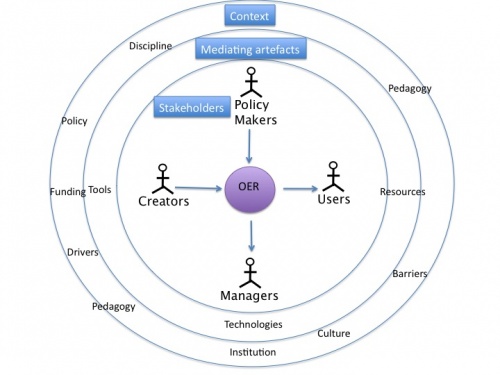Openness and open educational practices (OEP)
Sharing is at the core of openness, along with a willingness to contribute intellectual resources for collective benefit, development and ongoing adaptation. The open source software movement is a key example, along with the shift toward open access to scholarly knowledge, suggested by the Directory of Open Access Journals. Another feature of openness is the relationship between producers of artefacts and new knowledge and their consumers. The dynamic is increasingly one of co-creation, distribution and ‘crowd-driven’ innovation. This is of course occurring in interplay with digital technologies that foster sharing and distribution, along with initiatives and protocols to support intellectual property rights and reuse, such as Creative Commons licensing. In an attempt to define "open", David Wiley, a well-known scholar in open education, argues that "open" can have different meanings in different contexts and in practice it is a continuous (not binary) construct.
Open educational resources (OER) and open educational practices (OEP) are also elements of openness. OEP is a shift in thinking from being mainly focused on increasing access to digital resources, to being focused on supporting educational practices and promoting quality and innovation in teaching and learning through open educational practices (OEP).
OEP has three important dimensions:
- Developing strong engagement with stakeholders - mostly those involved in the development of OER (authors, users, managers and policy makers)
- Providing support to ensure that OER creators and users are guided adequately and that technologies are available to assist storage and dissemination
- Raising understanding of the context in which OER are used.
Unprecedented connectivity is now possible between learners, teachers, technologies and potential learning resources. Fostering formal, informal, and peer-to-peer learning, and supporting learners to be social, creative and autonomous are key characteristics of OEP. OEP is also promoted by UNESCO as a key strategy for improving educational outcomes in developing contexts.
